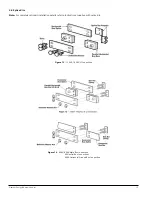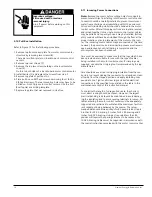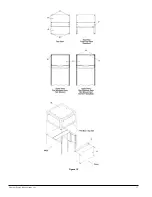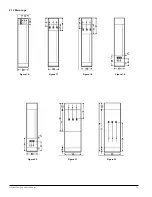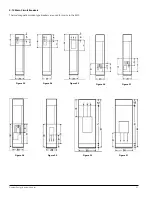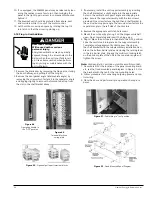
4 Operation
4.1 Pre-Energization Checks
After installation, field addition, or maintenance, perform the
following checks before energizing equipment:
1.
Check all connections for tightness, both mechanical
and electrical. Factory connections may loosen during
shipment and storage. It is of utmost importance to
inspect all connections and bolted joints for tightness
prior to energizing the equipment.
2. Compare all circuits for agreement with the wiring diagrams
which are provided with the motor control center. Be sure
that each motor is connected to its intended starter.
3. Verify that inserts or automatic shutters are installed in all
exposed openings in the vertical bus barriers.
4. Inspect the motor control center for accumulation of dust or
dirt. If required, clean the MCC as explained in the
Maintenance section of this manual.
Hazardous voltage.
Will cause death or serious personal inju-
ry.
Dielectric or megger testing should only
be conducted by qualified personnel.
Refer to test device instructions for safety
instructions.
5. Test the motor control center power circuit for possible
short circuits and grounds. A dielectric test at 2 times the
nominal system voltage plus 1000 volts applied for one
minute between phases and from all phases to ground is
the preferred method. The maximum allowable leakage cur
rent is 1.5mA per 1000 test volts applied. If a high-pot
tester is not available, then a megger test using a 500 or
1000 volt megger is a suitable second choice. The minimum
allowable resistance measured from phase to phase and
from phase to ground is one megohm. Be sure to discon-
nect any control devices, control power transformer, etc,
from the circuit which could be damaged by the test voltage.
Hazardous voltage.
Will cause death or serious
personal injury.
Never operate any contactor, relay, or
switch unless its arc chute is properly
installed and secured and undamaged.
6. Manually exercise all switches, circuit breakers, contactors,
magnetic devices, and other operating mechanisms several
times to make certain they are properly aligned and operate
freely. Some contactors are shipped with restraining devices
to minimize vibration effects during shipment. Be sure that
all such restraints have been removed. None of these
devices must ever be blocked in the .ON. position. Check all
electrical interlocks for proper contact operation.
Check all mechanical interlocks for proper freedom and
operation.
7. Check all timers for proper interval setting and contact oper-
ation.
8. Check overload relay trip setting or heater size and verify
that they are adjusted per the instructions given for the
overload relay in this instruction manual.
Explosive hazard.
Installation of fuses of insufficient
interruption rating can cause death
or serious personal injury.
To ensure proper coordination and suffi-
cient capacity to interrupt the available
fault current, always install replacement
fuses with UL class, continuous current
rating, type, and interrupting capacity
identical to the original. Never defeat
rejection mechanisms which are provided
to prevent the installation of the wrong
type of fuses.
9. Check all power circuit fuses and control fuses to verify
that they are sized in accordance with the National
Electrical Code application requirements. Class K-9 and H
fuses are not recommended.
10. Current transformers to which customer devices will be
connected, are shipped with their secondaries shorted.
All shorting devices should be removed when the second-
ary connections to these transformers are completed.
Make sure that the current transformer secondary is com-
plete. Current transformers must not be energized with
their secondaries open circuited.
11. Check all devices for missing or broken parts, proper spring
tension, free movement, rusting or corrosion, dirt, and
excessive wear. Make all necessary repairs.
12. Check all electrical relays, meters, and instruments to veri-
fy that connections are made properly and that the
devices function properly. Verify that adjustable voltage
and current trip mechanisms are set to the proper values.
13. Make sure that no fuses, overload relays, incomplete
sequence relays, shunt trips, ground fault protection
assemblies, electrical interlocks, or trip contacts from any
of these devices are strapped, bypassed, or defeated in
any manner.
14. Turn all circuit breakers and fusible switches to the
“OFF”position.
15. Make sure that all barriers, braces, and shields are installed
in the equipment as intended.
16. Check the integrity of all bus mounting means and cable
connections to the bus. Make certain that field wiring is
clear of line bus and physically secured to withstand the
effects of the largest fault current which the supply system
is capable of delivering. Make sure that control wires or
power cables are not touching the power bus.
Siemens Energy & Automation, Inc.
29

